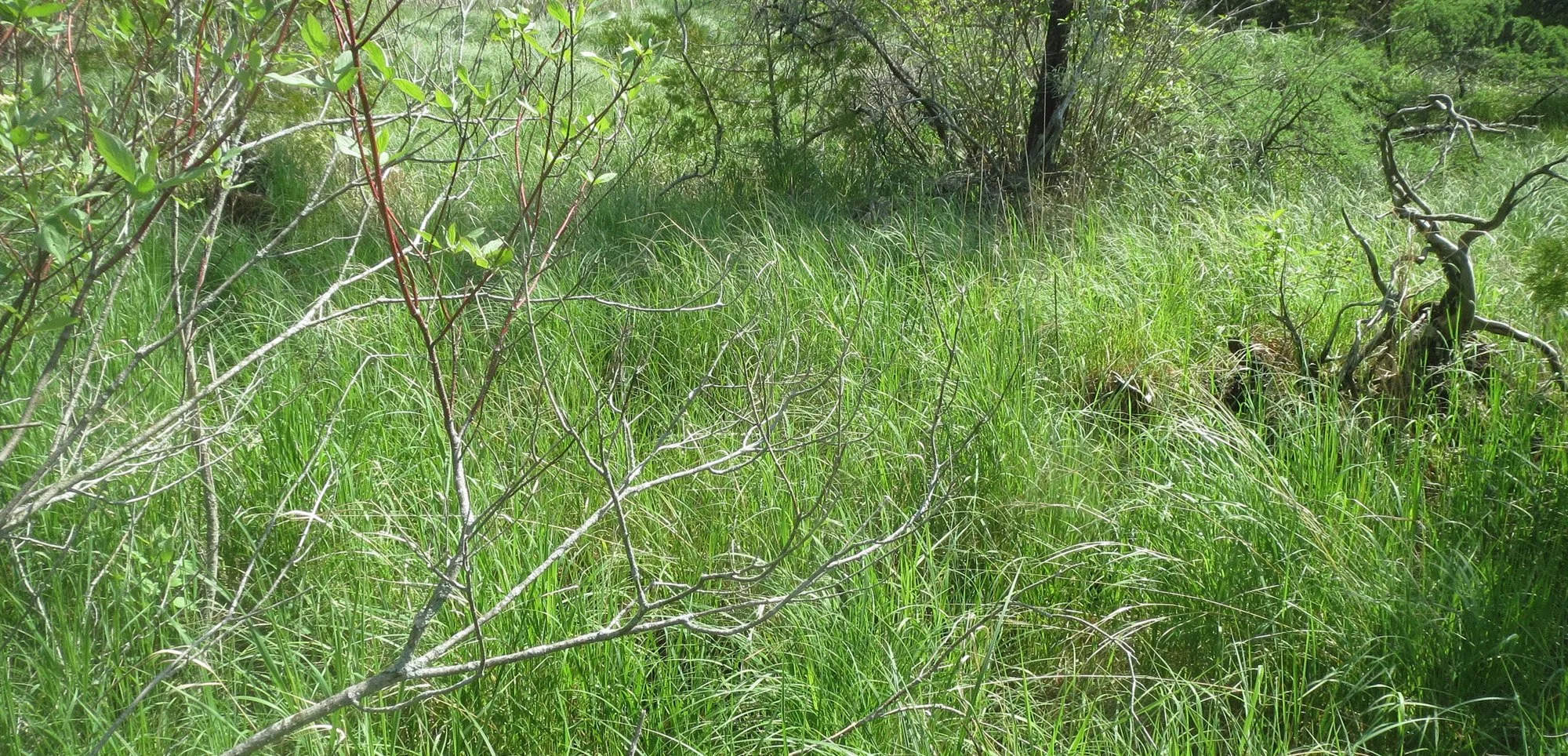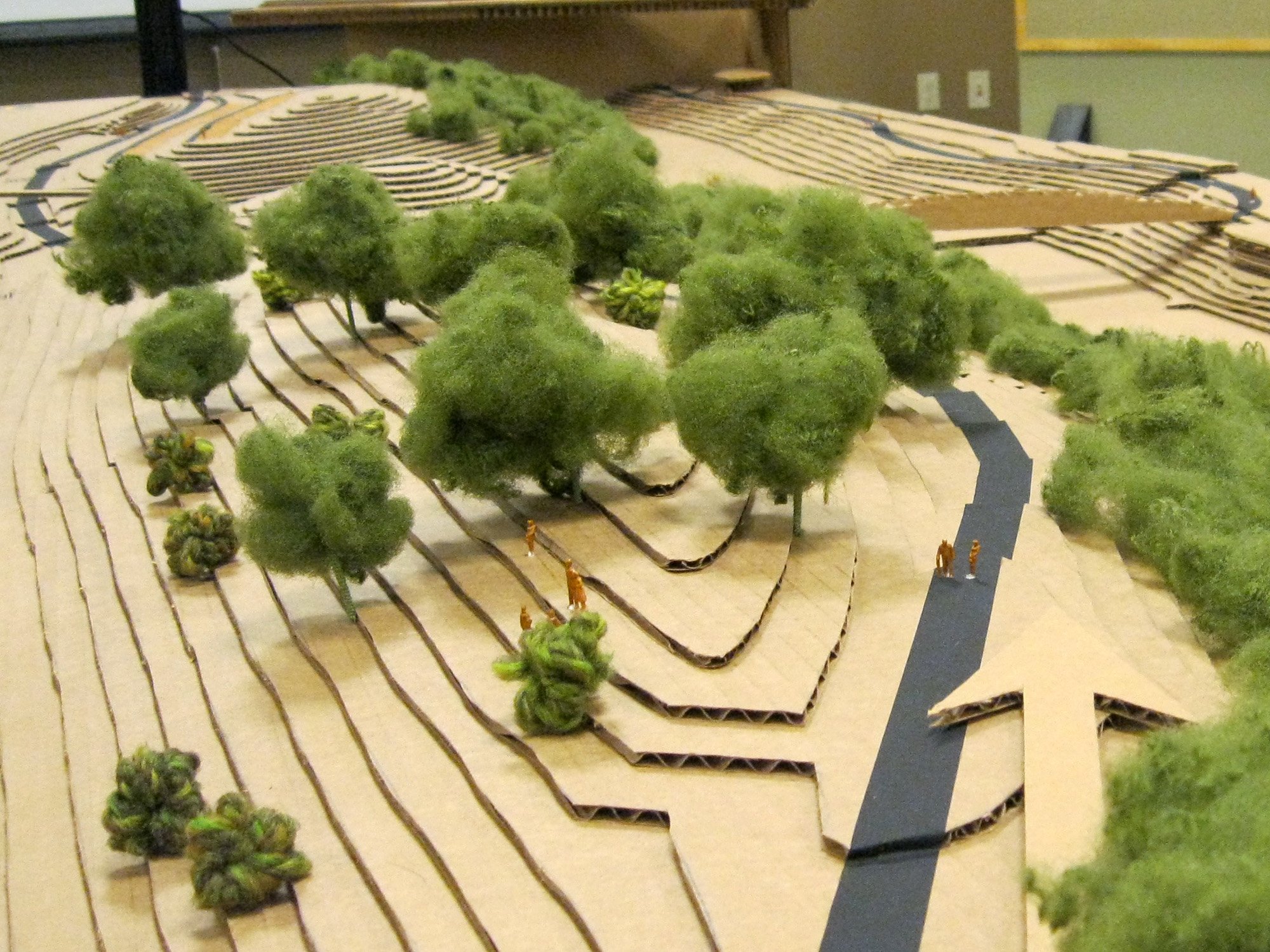Thoughts in the Prairie
Nancy taught a workshop session at Riveredge Nature Center, writing and sketching.
We hear thunder
The prairie feels the shadow of the clouds
Every leaf anticipates.
How does milkweed do it?
Common, everywhere, defiant, tough, ubiquitous, indispensable
And still catches my fancy.
I wish I knew the voices of the birds
Are they saying important things? Addressing the health of the planet?
I only want my voice to join theirs.
Video: Door County Land Trust
Dan Collins featured in Door County Today TV Show about the Door County Land Trust at Bay Shore Blufflands Preserve.
Hometown Work
Last week, my partner Dan and I were awaiting the walk across the stage in San Diego to receive our national award from the American Society of Landscape Architects, for our detailed plans for the restoration of a half-mile of the urban Menomonee River Valley.
We were next to Ryan, the award winner for plans for Washington DC’s National Mall. Dan and I were kind of emotional; we are so proud of our work and so hopeful it will be used fully and well. Ryan from AECOM smiled at us with similar emotion in his eyes, and said, “So, this is a hometown project for you, too, huh?”. He could relate. Yes, it’s a Hometown Project for us in a big, heart-filled way. We wrote in the client-of-our-hearts for the certificate, now proudly displayed in our office.
On Knowing How To Do Things
A few years ago, I was given the pro bono project of painting the concrete floor of the Urban Ecology Center with the Milwaukee rivers, streams and the shore of Lake Michigan. The building, by their design, echoes a map of the area: vertically from basement to second floor and horizontally from west to east. As I was working with paper stencils, a teenager watched quietly. After a while, we talked, and he started helping. After a while more, he paused, and asked, “how do you know how to do this?”.
My brain spun…
In the Twocreekian Age
August 26th 2011, Two Creeks, Wisconsin.
The company took a field trip to the globally unique Two Creeks buried forest. An exposed Lake Michigan bluff reveals remnants of an ancient cedar hemlock forest that was “run over” as the Wisconsin glaciers were in retreat 11k before present. Thoughts of ice mountains overtilling a mature forest of thuja and tsuga; landscapes laid bare, then rebuilt and again laid bare, only to be built again over thousands of years. Reference models for these types of forests exist near our work at the Bay Shore Blufflands in Door County and maybe some day with in the Menomonee Valley in Milwaukee. Digging in the dirt of the past we find a landscape of place and think about past and future places.
I. A. L.
From the 1873 Wisconsin State Horticultural Society Report
The advantages to be gained by a botanical report with a proper record of the same, to be made or kept either by accurate drawings of plants, or preserved by drying and pressing or otherwise, specimens of every known species that can be found, is well expressed by Dr. I. A. Lapham, who writes your secretary that already “many of the plants in my (Lapham) collection are now scarcely to be found in the state, having been driven out by the progress of improvement by which May-weed [probably exotic chamomile], Mullen, thistles, etc., take the place of the native plants. The time is now at hand when my collection will afford the only evidence of the former existence of many plants in certain counties of the state.”
True
Have you been to a visioning session lately with stakeholders, where the pronounced rules begin with “Speak your truth” and end with “Have fun!”? It’s happened once too often for me and I doth gently protest. Perhaps “speaking your truth” comes from what wikipedia tells me is Ehrmann’s Desiderata, “You are a child of the universe, no less than the trees and the stars…” (yes, I am a child of the 70s and had this on my schoolbook covers). But I’d point out that this text is not fairly quoted, then: it says to “speak… quietly and clearly”, the modifiers being the point.
I would rather not reduce the meaning of actual truth – you know, true is true and false is false… some things are knowably true. I’d rather not confuse truth with perspective and opinion and point of view. And, it’s not always about us.
Gray
January. This time of year I get so heart-filled with the colors outside. I want to impress the colors in my brain so strongly that they’re always there. Especially the twilight colors, the very dark gray-blues with the bit of gold hint on the horizon and the barely discernable not quite silhouetted colors of the tree branches and the way snow looks at night. Or that changeable weather we just had with those foggy misty gray days. Gray, and its huge range of colors within gray, make me so alive and noticing everything. It’s weird.
Funk’s Grove
I appreciate both the open-grown oaks, despite being most easily seen above turf and farm rather than savanna… and the lovely forest, despite its having grown up during fire suppression – with familiar faces of Floerkea. From the Illinois State Museum: “Private individuals preserved Funk’s Grove, southwest of Bloomington on Old Route 66 in central Illinois. A portion of these woods, Thaddeus-Stubblefield Grove, is a dedicated Illinois Nature Preserve established in 1993. It contains 1600 acres of oak savannas, woodlands, and forests. It has some of the largest trees in the state, and the best example of a bur oak grove. A secondary forest of maples is present; local people harvest and sell maple syrup.”
March Madness
Lest you think there is nothing much herbaceous going on March 31 north of Milwaukee below the snow, let me introduce you to the tiniest, mightiest annual Floerkea proserpinacoides, which knows better than most how to be darned effective, and the welcome and gorgeous Symplocarpus foetidus, which takes re-training of my forest eye each spring.
Old-School
I admit it, I am tickled by being re-introduced (and introducing others) to how well low-tech models can work to communicate and to persuade: in this case, about the challenge of making truly wild places in this spot surrounded by city. Works well in the thinking and re-working process, works well in the performance-art process (let me show you how the forests could be restored). For a digital blending of this with 1990s aerial photo, see Landscapes.
“Watershed: Art, Ecology, and Community Engagement”
I really like how you can feel the watershed’s pulse from a simple digital elevation model (left, Milwaukee River watershed), a living earth even with the faintly visible rifts of freeway and sometimes railroad; let’s not stretch her resilience any further. And, how the 1836 hand-drawn survey maps so powerfully evoke another time in this place: everything that goes with managing to survey and walk square mile sections, crossing swamps, bluffs, rivers, forests, savannas, blazing trees and identifying each one you cross… at a time when you’d be unlikely to meet another person for days. Thank you to Nicholas and Raoul for the opportunity to have a tiny part in their far-reaching multi-year project (see Watershed for more), and for making community engagement and activism central to art.
Wildness as a Value
I have been thinking more about Wildness as a distinct value of Place, articulated better than me by friend/colleague Marc. An aspect I think important is the sense of personal discovery: that the secret of this unexpected patch of Lespedeza capitata amongst the copper and fluff of Schizachyrium scoparium is mine alone. That nobody else knows about this leftover sand pit, and to look for wolf spiders. In a city, this idea of undiscovered place seems at first in sharp contrast to the desire for full and deep community engagement with place. Can a landscape belong fully to and be beloved by everyone, and at the same time, be to any person, theirs alone – and full of wild life to be discovered? This is the tremendous potential of air-line yards [Three Bridges Park]…
Anywhere, Sunlight and Rainfall and Aspect Make Detail
Also at Storm King, Maya Lin’s work is beautifully conceived/sited. But the detail I like best is the self-sorting of the native grasses based on slope aspect and moisture… leading to the “fringe” of Bouteloua curtipendula (growing on the upper parts of south-facing slopes) visible along the ridges of the wave field (when viewed from the trail which leads you around the north/northwest).
Substance Behind The Scenes
Things to love at the High Line – unexpected treasured spots, like this spur… But my favorite has to be the NYC Parks trailer offices, stewardship gear and onsite nursery at the south end, right under the High Line.
Public Art That Shows You Something Else
I find myself sometimes arguing against public art. Well, actually, for public art that is temporary, and for public art that doesn’t distract from something more important. As much as I enjoy Goldsworthy (left), I found something I appreciated more (right) at Storm King Art Center in NY – art that says, “hey, did you notice the forest behind me? Pay attention”. These steel trees (Menashe Kadishman) line the walking trail. On the foreground side of the trail is lawn and structured stuff. On the background side of the trail is a lovely and substantial native forest: a pretty important thing.















